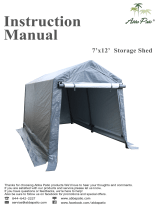-
Hello! I am an AI chatbot trained to assist you with the Miller AUTO ARC 255 Owner's manual. I’ve already reviewed the document and can help you find the information you need or explain it in simple terms. Just ask your questions, and providing more details will help me assist you more effectively!
-
What safety precautions should I take when using the Miller AUTO ARC 255?
How do I set up the Miller AUTO ARC 255 for welding?
How do I troubleshoot common problems with the Miller AUTO ARC 255?
What routine maintenance tasks should I perform on the Miller AUTO ARC 255?
Where can I find the electrical diagram for the Miller AUTO ARC 255?





















